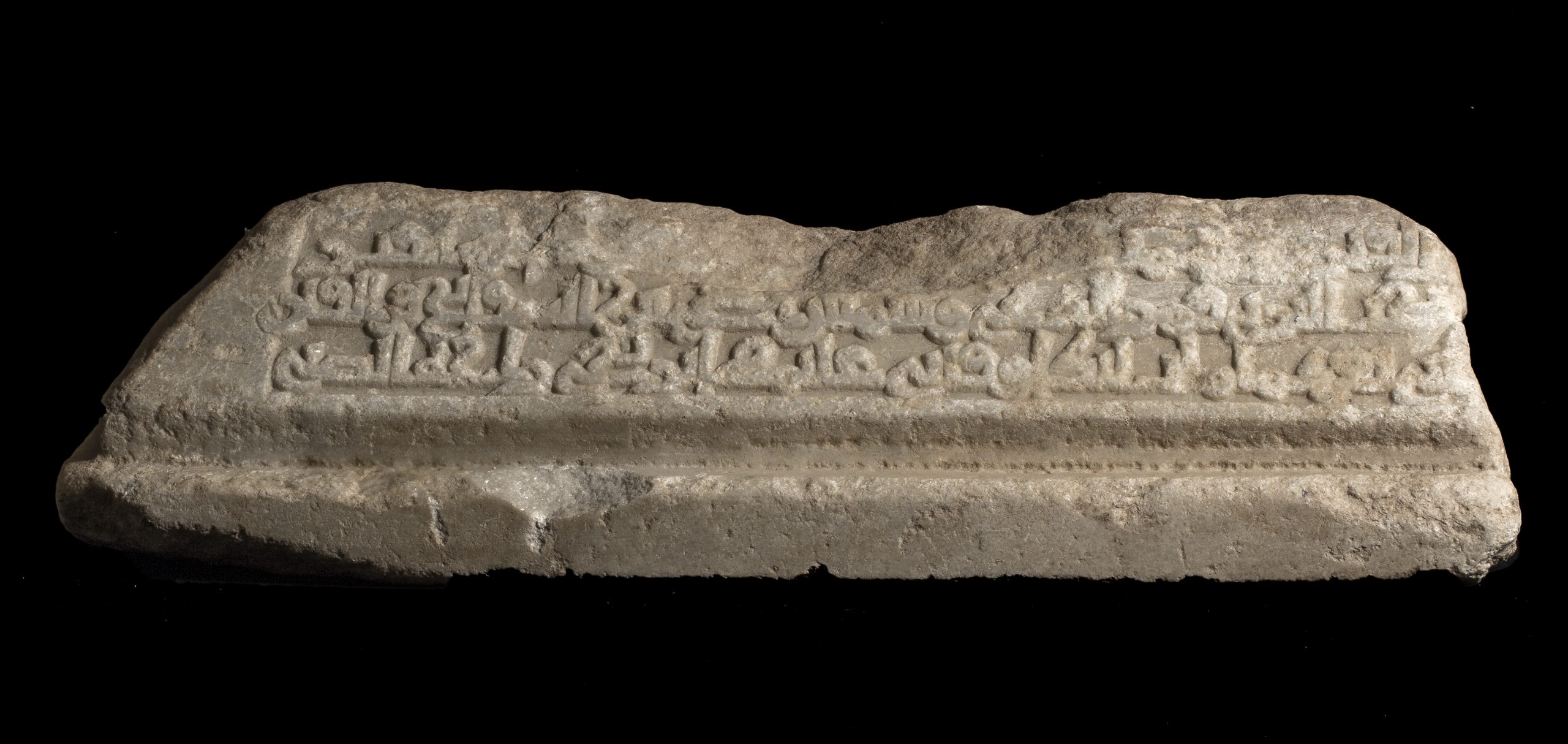DAI NORMANNI ENG
FROM THE NORMANS TO THE RENAISSANCE

Prismatic marble stele (stone slab) with kufic inscription. 12th century AD; found in Taranto, S. Maria del Galeso (photo MArTa)
Robert Guiscard
With the conquest of the Norman Robert Guiscard in 1080, a period of relative tranquillity began for Taranto. From this moment on, the southern port system was regulated.
Merchants and ships’ captains paid numerous state and feudal duties for imports and exports. Payments were made for landing, be it only anchorage or phalangage (i.e. the possibility of planting poles to which to moor or making use of existing ones).
You paid for lanternage, a tax for ports with a lighthouse, and also for fishing. To monitor this there was the Mastro Portolano (Master Portolan) for the Territory of Otranto, who supervised the customs officers of the province, the traffic and obtaining precise data from his officers, the portulanoti.

Robert Guiscard crowned duke by Pope Nicholas II in Melfi, miniature (from Wikimedia, manuscript Nuova Cronica - ms. Chigiano L VIII 296)
THE BOOK OF KING ROGER
In his ‘Book of King Roger’, the Maghrebi geographer and traveller Al-Idrisi (1099-1164) describes Taranto as “a large city, of ancient construction and remote origin, with beautiful buildings and sumptuous palaces. It is frequented by merchants and travellers. There, ships are loaded and caravans arrive, being furnished with an abundance of wares and riches.
The city has a harbour in the open sea from the west and from the east by the north wind it has a small sea that measures twelve miles around, going from the bridge to the city side. This bridge is between the open sea and the small sea; it is three hundred cubits long from the gate of Taranto that looks north to the mainland, and it is fifteen wide”.
THE PORT IN ANGEVIN TIMES
We can imagine the working activities at the port of Taranto in the Angevin period from what we would today call the ancillary industries.
We know that in 1284 as many as one thousand five hundred “cannate” (=15,000 kg) of fleet biscuits, i.e. the main food of the sailors on board ship, were produced. This kind of biscuit could last for months or even years without spoiling, thanks to a special blend of unrefined flours whose composition has been lost to this day.
If those 15 quintals of biscuit supplied the crews in transit from the port of Taranto in 1284, one can imagine a wide range of work around the movement of ships, such as the preparation and trading of salted fish.
GIOVANNI ANTONIO ORSINI DEL BALZO
From an inventory compiled by Prince Giovanni Antonio Orsini del Balzo around 1435, we know that at that time there were “fishponds” all over the Mar Piccolo and also in the Mar Grande. Taxes were strictly regulated, a tax being paid according to the types of fish caught, the fishing techniques used and the seasonal or daily fishing periods.
Few fishponds were exempt from taxation, and it was established from time immemorial that fishermen in the Mar Piccolo could only fish from sunset until the early night.
The customs house was in what is now Piazza Fontana, but the prince moved it elsewhere to expand the working space in the piazza, which was soon capable of accommodating three galleys undergoing maintenance.

